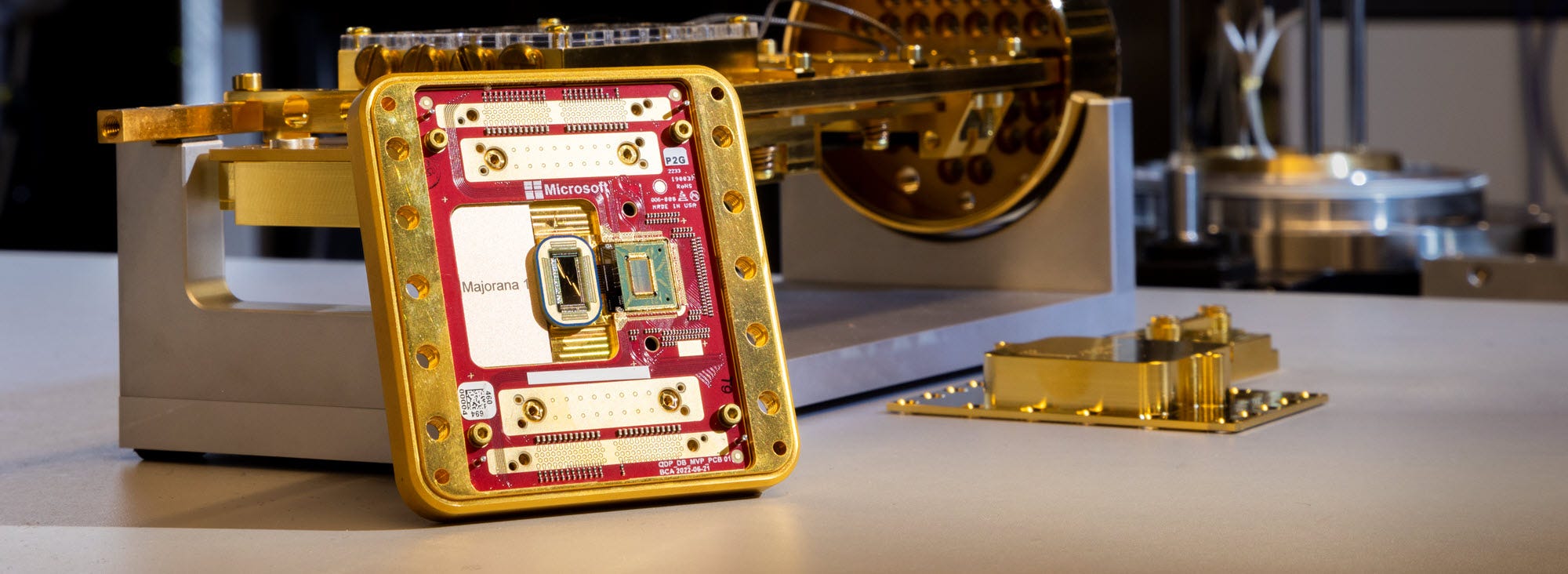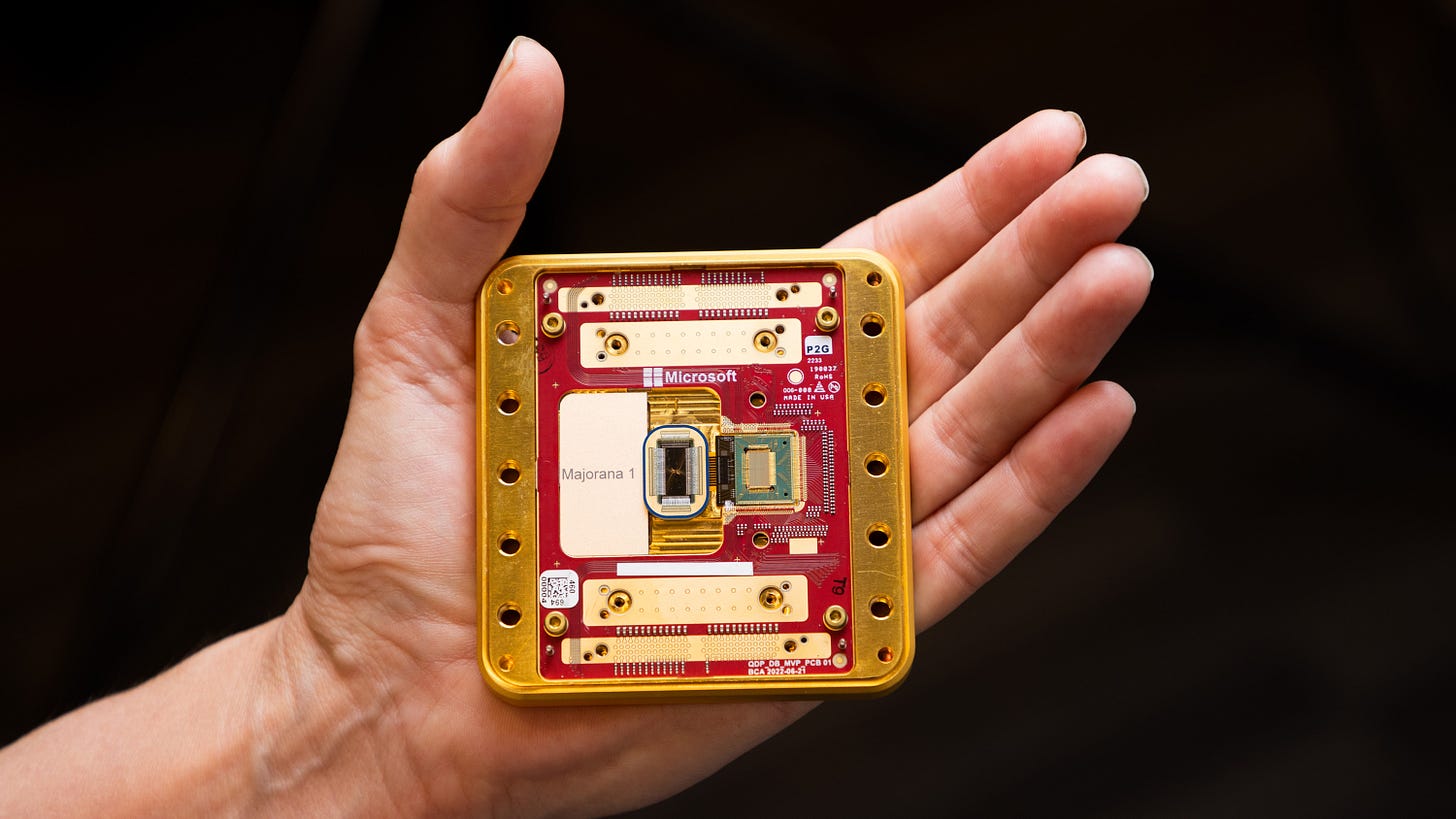A Quantum Breakthrough is Coming in AI
AI and Quantum Computing: The Collision You Didn’t Expect by Meg McNulty
Good Morning,
We are approaching a time when Quantum computing and artificial intelligence will merge in AQ.
Companies like Quantinuum and SandboxAQ are already working on this. Nvidia and other hyperscalers including IBM are looking into it. With Google’s recent investments in QuEra this era of AQ (AI and Quantum working together) is approaching quickly.
As an emerging tech analyst, I cover this on my Newsletter Quantum Foundry.
I cover Quantum Startup News on Quantum Foundry Newsletter:
What is this “AQ”?
AQ represents a “moonshot” synergistic integration of Artificial Intelligence (AI) and Quantum Computing, highlighting how both technologies can enhance each other. By combining the distinct capabilities of AI and quantum technologies, AQ promises revolutionary advancements across various fields.
Today I have two objectives, to introduce you to Meg McNulty and her Podcast with a guest post below, and her Newsletter CipherTalk, and give you an overview of Microsoft’s new quantum chip that is a bigger deal than Google’s Willow chip.
It was once unthinkable that AI would be augmented by Quantum computing and Quantum science capabilities. However the bleeding edge research is changing in my opinion in the 2020s. More will become possible soon (given a 5-15 years timeframe).
What is Majorana 1?
Is Microsoft’s approach to qubits a major breakthrough? It could be.
Majorana zero modes (MZMs) are intriguing quantum states found at zero energy levels in certain superconductors, linked to Majorana fermions. These modes are bound to defects and exhibit unique properties such as topological degeneracy. They are particularly exciting for quantum computing because they behave as non-Abelian anyons, allowing for robust information storage through braiding operations. Read more.
Microsoft’s Majorana 1 chip
Microsoft in recent years has been working on a novel approach to qubits. The Majorana Particle.
Microsoft's Majorana 1 chip is a groundbreaking quantum processing unit that employs a new Topological Core architecture. This innovative chip has been designed to support a new paradigm of quantum computing, leveraging the unique properties of Majorana fermions, which are subatomic particles theorized almost a century ago but only recently observed and manipulated in laboratory settings.
The company says it is on track to build a new kind of quantum computer based on topological qubits.
It’s a bit confusing even for many physicists today, Microsoft claims to have made progress toward building a more stable quantum computer by successfully measuring a key property of exotic particles called Majorana zero modes.
Basically, Majorana zero modes (MZMs) are exotic quasiparticles that arise in certain topological phases of matter, particularly in one-dimensional topological superconductors. They are distinct from traditional fermions and exhibit unique properties that make them of great interest in quantum computing and condensed matter physics.
It’s Microsoft’s moonshot in Quantum, and if it works, it might become the best approach to qubits to scale Quantum computing in order for them to be useful and augment AI. This is by no means a sure bet and is actually pretty controversial. In summary, Majorana zero modes are fascinating components of modern physics with significant implications for the future of quantum information science, emphasizing their potential role in the development of topologically protected quantum computers.
Majorana 1: the world’s first Quantum Processing Unit (QPU) powered by a Topological Core, designed to scale to a million qubits on a single chip.
A hardware-protected topological qubit: research published today in Nature, along with data shared at the Station Q meeting, demonstrate our ability to harness a new type of material and engineer a radically different type of qubit that is small, fast, and digitally controlled.
A device roadmap to reliable quantum computation: our path from single-qubit devices to arrays that enable quantum error correction.
I can understand how Microsoft is bullish about their unique approach, but it’s far from a certainty that it will work out. This signals a new era of BigTech getting involved in Quantum computing and investing rapidly in Quantum science to consolidate the industry as the U.S. races to stay ahead of China in emerging technologies for national security purposes. Already in the U.S., they are investing in automated ships and automated drone technologies to keep up with China. Quantum computing will now get huge funding on the basis of its national defense implications.
BigTech’s investment in AI Infrastructure, robotics and quantum is all part of its national security interests. China is rapidly leading many of these fields in reality, its Origin Quantum startup is fairly decent. I don’t just cover AI related topics, as an emerging tech analyst I cover everything from the Semiconductor news cycle to robotics. So when I bring in a guest writer to do a post, I’m not on holiday somewhere, I’m literally likely to be working on a piece in another Newsletter. But enough about me, and enough about Microsoft! The prospect of AI and Quantum merging is fascinating.
I’ve been hounding CipherTalk for insights into Quantum’s potential in AI for quite some time. McNulty isn’t just an enthusiast, she has professional experience in the field.
Explore CipherTalk
Decoding DeepTech and tomorrow’s biggest trends. By Meg McNulty
Brought to you by, Guest posts by AI Supremacy. Pitch me a topic in a DM via LinkedIn. Let’s rewind to February 8th, 2025.
AI and Quantum Computing: The Collision You Didn’t Expect
In this article Meg McNulty outlines Quantum science, its trajectory and its likely impact on AI.
I go into more detail about Quantum’s importance in national defense and what Microsoft’s chip news means.
Keep reading with a 7-day free trial
Subscribe to AI Supremacy to keep reading this post and get 7 days of free access to the full post archives.







